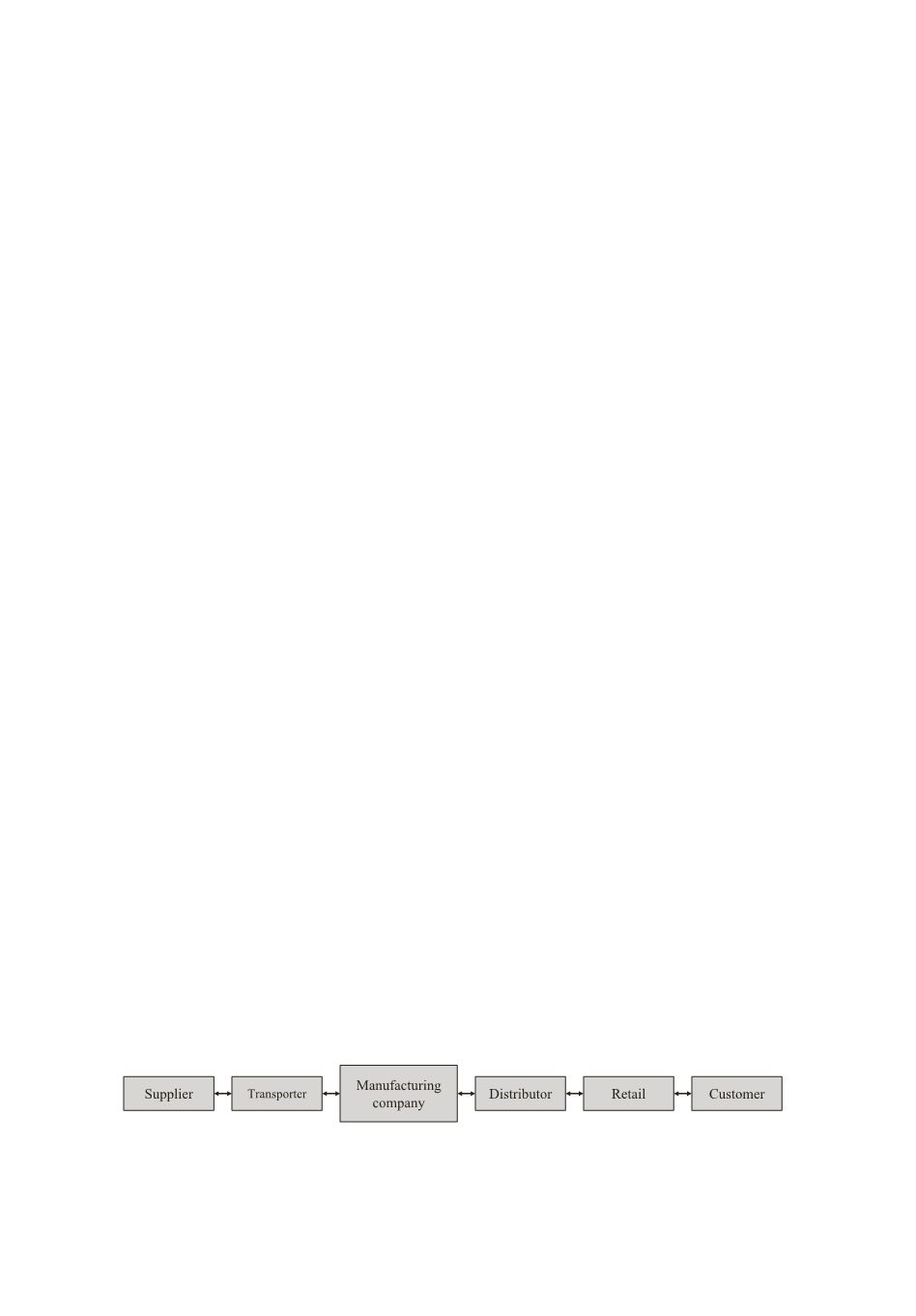

8
1
NEW CONCEPTS IN SUPPLY CHAIN MANAGEMENT
1.1 Supply chain
The concept of a “supply chain” has recently been defined by many authors, which
has lead to several different viewpoints. One of the crucial ones defines a supply chain as
a group of activities which fall within a few different companies. The closest definition
to the above presented understanding of a supply chain was presented by the European
Committee for Standardisation a “supply chain is a sequence of processes to add value to
the product during its flow and processing of raw materials, through all the intermediate
forms, to form in line with end customer requirements” [21].
Ganeshan and Harrison define a supply chain as “a network of facilities
and distribution options that performs the functions of procurement of materials,
transformation of these materials into intermediate and finished products, and the
distribution of finished products to customers” [23]. A much respected and well-known
definition is the one by Christopher: “the network of organisations that are involved,
through upstream and downstream linkages, in the different processes and activities
that produce value in the form of products and services in the hands of the ultimate
consumer” [9]. A similar definition is presented by Bagchi: “a supply chain consists of
a network of companies and carriers supplying raw materials and components and,
later, they transform them into semi-finished products and final products designed to be
consumed by the ultimate consumers” [1] or, more simply, by Lambert et al.: “a supply
chain is the alignment of firms that bring products or services to market” [35].
The characteristics of each supply chain include (modified according to [36]):
• A complete process in order to provide products and services to final consumers.
• All logistic operations, from sourcing to distribution.
• Management extending beyond the boundaries of individual organisations
to plan and control processes in other organisations.
• The attainment of individual goals of the organisation.
• Suppliers, production equipment, warehouses, carriers, consumers and customers:
the flows among these elements can be divided into informational, material
and financial.
The supply chain structure is always influenced by the specific conditions in
which it was created and has been operating. The basic model of the structure is referred
to as “linear” and is mostly used for theoretical study, since at each stage it contains only
a single subject (see Figure 1.1).
Figure 1.1 Simplified model of linear supply chain structure
















